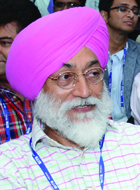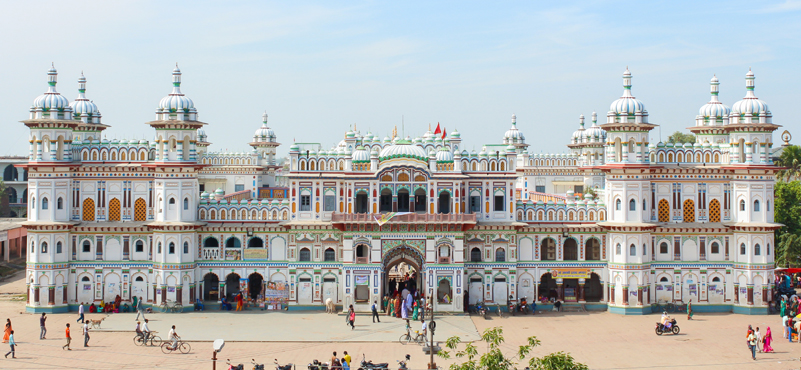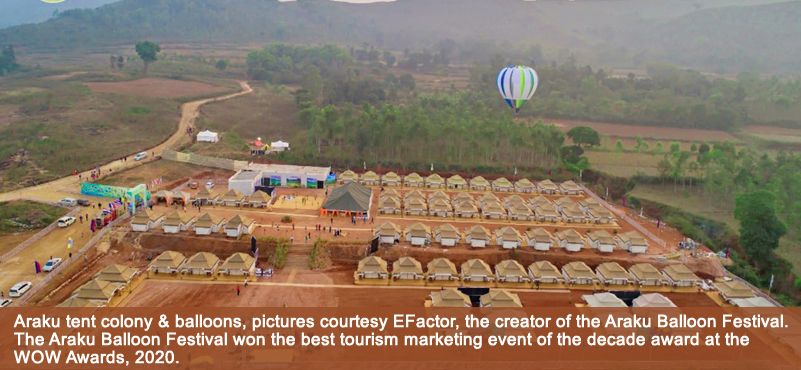‘Himalayan States Council’ could answer some of the most glaring questions facing India’s hill states, but it needs to be represented by professionals from diverse disciplines to save it from becoming yet another organisation under bureaucratic control, said Mandeep Singh Soin, FRGS, Founder & Managing Director, IBEX Expeditions. He also believed that a new body could arrest migration which was a major hurdle in creating adequately skilled manpower for shouldering travel and tourism. Excerpts of his interview:
 We had interviewed Major Vijay Singh Mankotia, Vice Chairman, Himachal State Tourism Development Corporation in the September issue of TourismFirst on the way forward for hill states of India. He, in a very detailed interaction, had vigorously advocated creating a ‘Himalayan States Council’, an autonomous body dedicated to development in the hill states, on the lines of MDONER (Ministry for Development of the Northeast Region) to better harness the potential of these states.
We had interviewed Major Vijay Singh Mankotia, Vice Chairman, Himachal State Tourism Development Corporation in the September issue of TourismFirst on the way forward for hill states of India. He, in a very detailed interaction, had vigorously advocated creating a ‘Himalayan States Council’, an autonomous body dedicated to development in the hill states, on the lines of MDONER (Ministry for Development of the Northeast Region) to better harness the potential of these states.
It remains a fact that hill states in India have unmatched tourism potential and much of it has remined under-utilized. Successive governments have ignored them. Facing a perennial resource crunch, with much of their natural resources now under the purview of the central government, vagaries of the weather and migration that has also posed a considerable threat to quality of available manpower for shouldering travel and tourism, the need for a radical intervention to resurrect them is more glaring than ever. Vijay Mankotia had pointed towards how limited resources and inadequate infrastructure had made hill states overly dependent on central government’s assistance and arrested growth and development, impacting travel and tourism. Major Mankotia had also batted for creating new hill stations to overcome the fast dilapidating condition of India’s available and over-spilling tourist spots in the hills.
TF decided to further explore the feasibility of such an undertaking, involving some veterans of the tourism industry. We spoke with Mandeep Singh Soin to get his understanding on the issue.
Calling the idea of constituting a separate autonomous body to oversee developmental work in the Himalayan states a “very good move”, Mandeep Singh Soin noted that the idea had varied implications which went much beyond only travel and tourism.
“HIMTAC, I believe, was created on similar lines. It was supposed to share ideas about what steps could be taken on the tourism policy front and other related issues, but, later, it became a defunct body,” he said.
To his understanding, an autonomous body needed to be represented by professionals from diverse verticals to moot a comprehensive strategy for hill states. “It must not only have bureaucrats, if that happens then it will end up becoming yet another organisation,” he said.
“It must have able representation from multiple disciplines including architects, builders, NGOs, hoteliers and others. If that happens, it would help create a more holistic body, which would be able to address the challenges facing these states,” he added.
He noted that Vijay Mankotia’s idea of creating Hill States Council was a ‘vibrant one, provided it had representation from across verticals.’
Explaining the need for a multi-disciplinary body, he highlighted how architectural mismatch was a common sight at hill stations. “We go to Austria and other European countries to sample their unique architecture. Our hill states have such unique architecture, but the challenge is to retain the architectural harmony. The new additions are so alien to local traditions that it just does not blend. How do we blend it with nature and local landscape is a question that needs to be answered. When we are framing policies, we must rope in architects and builders to create that synergy in the local architecture – which can then act as a major pull for tourists,” he said. He also backed the idea of putting in place guidelines for construction in the region, noting that “it would establish some basic norms like quality of material used and sustainable architecture.”
Mandeep Soin argued that the pressures of rising population, often reflected by swarming traffic during vacations at select destinations, water crisis and garbage disposal were outcomes of a policy that has long been bereft of sustainable development approach. “Our hill stations are becoming urban crawls and are in dire need of incorporating concepts like rain-water harvesting and amenities like roads, resorts and like. There are several issues that need to be looked into,” he said.
He also raised the issue of migration in hill states, linking it to lack of policy initiatives, stating “it can be a very empowering idea for the local populace, if the idea is taken forward. Some NGOs are trying to take this forward, but it is simply not enough.”
On the question of whether the proposed idea could be modelled after MDONER, he reflected that MDONER could share their experiences of undertaking developmental work in the Northeast and their learnings could be utilized while framing policies for the Himalayan states. “MDONER could share their expertise. It would facilitate exchange of ideas,” he said.
A glaring example of India’s unimaginative tourism policy, and rightly pointed out by Vijay Mankotia during the above-mentioned interview, is that the country has not been able to develop a single new hill station since independence. The need for new hill stations is being strongly felt as most existing ones are nearing saturation. Mandeep Singh Soin suggested creating a ‘model hill station’ which could act as an example for the nation to emulate. “Lavasa to some degree has been able to achieve that. A lot of thought has gone in to making it a sustainable destination, “he said.
Adding that the ‘model hill station’ could be at a destination with hills and situated above 6,000 feet, he said “make it a sustainable and an ideal hill station. It will, at least, make people think about what a sustainable hill station looks like.”




































